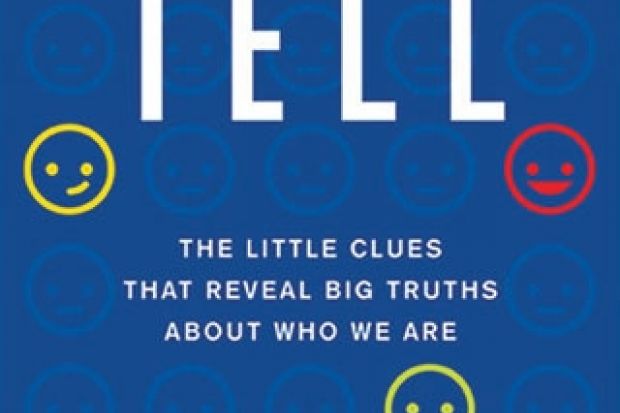During a high-stakes poker game in Casino Royale, James Bond notices that one of the players, Le Chiffre, twitches his eye every time he tries to bluff his way through a poor hand. Bond decides to bet big the next time Le Chiffre’s eye twitches.
Poker players call Le Chiffre’s twitch a “tell”, a barely discernible mannerism that may reveal the strength of an opponent’s hand. In The Tell: The Little Clues that Reveal Big Truths About Who We Are, Matthew Hertenstein ventures beyond card games to examine “tells” that predict career success, marriage stability, truthfulness, aggression, sexual orientation and much else.
According to Hertenstein, we use subtle cues to form judgements about others, although we may not be aware of doing so. For example, most people perceive tall men to be more powerful than short ones. This suggests to Hertenstein that tall men should have an edge when it comes to running for president of the US. Sounds unlikely, I know, but it is true. Hertenstein provides a table of presidential heights, and they are indeed a lofty group.
It’s not just height that is predictive. Most of us judge men with wider faces to be less trustworthy and more prone to aggression than men with narrow faces. This seems a rather gross generalisation. Yet, it turns out that men with wide faces are not only more likely to commit crimes but also to receive longer jail terms than slim-faced criminals. Why? According to Hertenstein, wider faces reflect above average levels of testosterone, a hormone that may predispose men to transgress. Of course, few of us are consciously aware of this link, but our unconscious minds seem fully informed. Hence, we are able to judge whether a man is likely to commit a crime just by looking at his face.
Hertenstein calls the link between height and becoming president, and the relationship between wide faces and criminality, “party worthy” findings. In other words, they are stories that will amaze and entertain your friends. And this book is full of them. For example, it is possible to guess someone’s IQ score with a degree of accuracy by watching a one-minute soundless video. Seeing a face flashed on a screen for a 20th of a second is sufficient to determine a person’s sexual orientation. Baseball players with broad smiles live longer than glum ones. Men rated attractive by women have “higher quality” sperm. Observe a married couple talking for three minutes and you can predict if they are likely to divorce. Men prefer women with a waist-to-hip ratio of 0.70 (narrow waists and flaring hips) because this ratio is a good predictor of fertility. (In true anorak style, Hertenstein obligingly provides a table of celebrity waist-to-hip ratios – Kate Moss is a 0.66 while Scarlett Johansson is an almost perfect 0.69.)
Hertenstein helpfully includes material particularly relevant to readers of Times Higher Education. It seems that university students make up their minds about a lecturer within a few minutes of the first lecture; first-day approval ratings are almost identical to end-of-term ratings. But don’t despair; just manipulate the relevant “tells”. Behave enthusiastically, use lots of gestures, modulate your voice and you will boost your scores.
Apart from university lecturers and party show-offs, these various tells have little relevance to our daily lives. We are not going to condemn men to prison because they have wide faces, and we probably don’t want to choose our political leaders by their heights. A 0.70 waist-to-hip ratio may predict fertility, but choosing a partner on her shape alone does not ensure that she will be a good mother.
Hertenstein opts for general advice. He wants us to trust our intuition because thinking too much can lead to a worse outcome than just going with our gut instincts. Maybe he is right, but tells, which are all based on correlations and probabilities, are far from foolproof. Bond found this out the hard way. He waited patiently for Le Chiffre’s eye to twitch and, when it finally did, he bet his entire bankroll. Unfortunately, Le Chiffre was not bluffing; he had a strong hand. Bond went bust, and mayhem followed. So rely on tells if you must, but understand that from time to time, they may blow up in your face.
The Tell: The Little Clues That Reveal Big Truths about Who We Are
By Matthew Hertenstein
Basic Books, 256pp, £17.99
ISBN 9780465031658 and 069880 (e-book)
Published 13 February 2014
Register to continue
Why register?
- Registration is free and only takes a moment
- Once registered, you can read 3 articles a month
- Sign up for our newsletter
Subscribe
Or subscribe for unlimited access to:
- Unlimited access to news, views, insights & reviews
- Digital editions
- Digital access to THE’s university and college rankings analysis
Already registered or a current subscriber? Login





